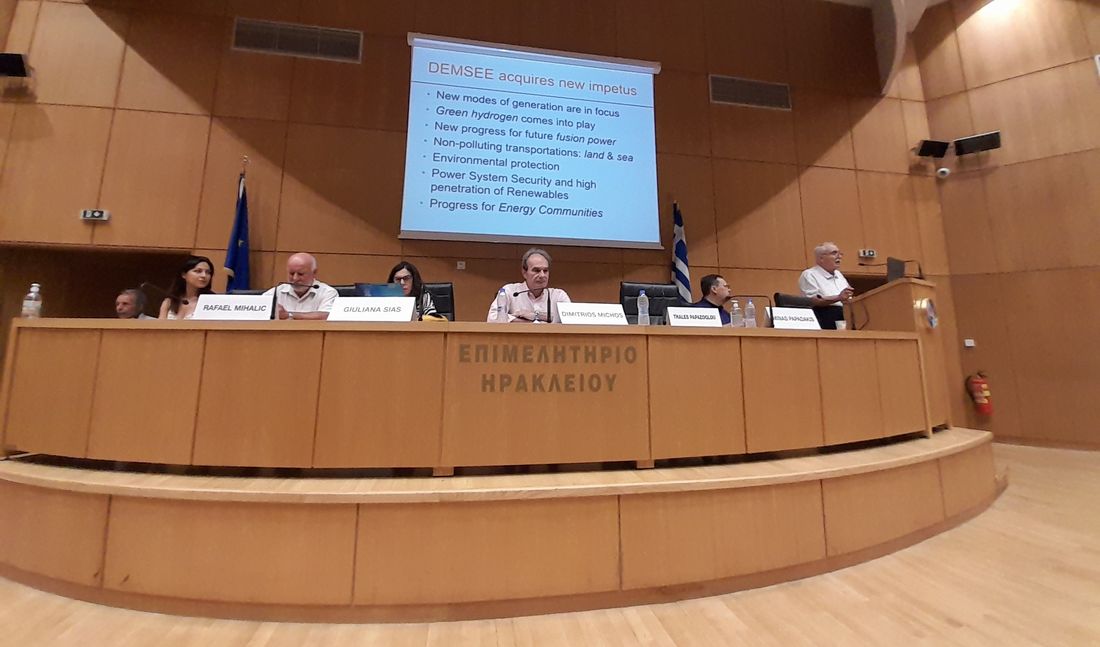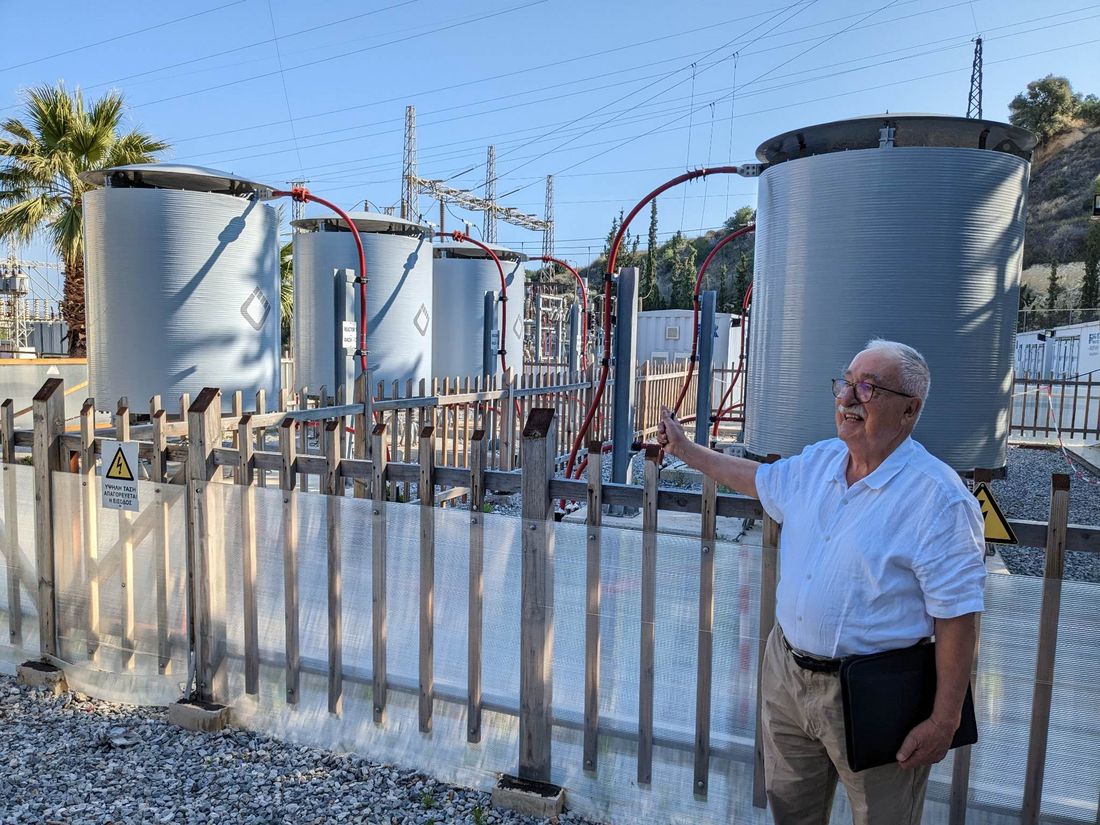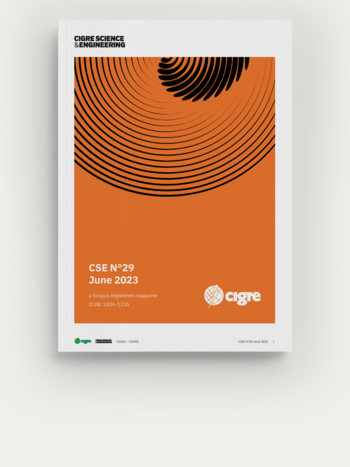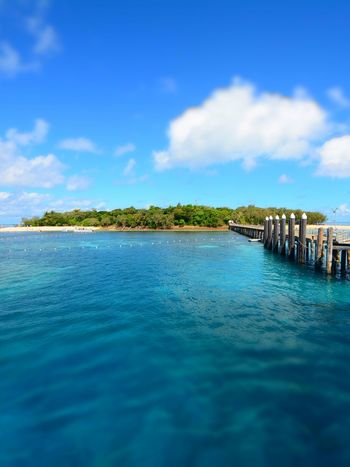15th DEMSEE annual Congress Report

Opening DEMSEE 2023 by Prof Papazoglou
Iraklio - Crete
27 June 2023
By Professor Thales M. PAPAZOGLOU, PhD
The 15th DEMSEE Congress was a notable success this year, on 27 of June, in Iraklio, Crete. Initially, it was scheduled for the 26-27 of June, but the Greek elections on the 25th resulted in the cancellation of the initial starting day. More than 35 delegates were present during the program – many of whom Cigreans. Focus was on the Electric Power System (EPS) of Crete which: (a) is interconnected with the mainland system via the World’s longest AC undersea cable at 150 kV which can provide up to 34% of the maximum power demand in Crete, and (b) incorporates FACTS devices, namely: STATCOM of total rating ± 64 MVAr located at the 150/20 kV Substation “Iraklio III”. The chosen Focus Theme for the conference was “Future Smart Grids and Markets”.
For the AC interconnection with mainland power grid, two undersea triplex cables, each with capacity 200 MVA, XLPE insulation, and 132 km length Peloponeese – Crete 980m max depth, connected with ground cables on both sides of 42 km total added length. Each cable was manufactured in 4 segments (3X630 mm2 Cu-stranded conductors), so there are 3 undersea cable joints, for each cable, that were installed at a maximum depth of 450 m. A temperature-monitoring system, using optical fibbers has been incorporated. Total project investment: 356 Meuro.
There are two identical STATCOM devices operating in parallel as one master and one slave with normally equal loading. Each STATCOM has 42 IGBT (Insulated-Gate Bipolar Transistor) Semiconductor Valves/phase controlled by means of programmable digital controllers. The STATCOM is shunt connected to the transmission line via its coupling transformer (three-phase) and one tie reactor per phase, which connect the Voltage-Sourced Converter (VSC). The selected mode of operation for the STATCOM in the EPS of Crete is the Automatic Voltage Control Mode and therefore, it supports Voltage and VAr in the System [1]. The coupling transformer has a ratio of 150/20 kV. Windings Wye-to-Delta connected. Has one part of the connection reactance. The tie reactors are arranged outside in two rows of 3 + 3 (see picture 2). Connect each one phase of AC for each STATCOM. The tie reactors complement the coupling reactance of the coupling transformer between the converter and the AC line and protect valves against short circuits. The two dry-type air-cored reactor banks are shown in picture 2.

Picture 2 - STATCOM Tie Reactors
The Quality of the power supply by the EPS in Crete has been remarkably upgraded and is now up to the standards of the Greek mainland System. The serious power-supply quality problems that consumers were faced with in previous decades are now gone for good. Considerable operational savings have been achieved so far! And, with the expected operation of the HVDC bi-pole (± 500 kV) 1 GW undersea cable Attica-Crete interconnection, at the end of 2024, the EPS of Crete will serve as a hub for a high penetration of RES, plus the quality of power supply will reach the very top European Standards. The undersea cables for HVDC, each with length 335 km from Korakia (Crete) to Pachi – Megara, weight: 40 kg/m (total ca 14 ktonnes). With additional ground cables, the total interconnection length is 400 km, with maximum sea depth 1200 m. Voltage-Sourced Converters (VSCs) rated each at 500 MW.
In the Greek System the Renewable Energy Sources (RES) in operation are now more than 10 GW, with more than half of which the photovoltaic, and the rest wind generation. In May the total generation in Greece was provided by half from RES. In the total year-round generation, about 40% is from RES, so there is still quite a way to go to reach the final target for the year 2050.
Energy Markets are now in the time of the so called Transition Period during which the changes necessary to achieve zero-carbon emissions – the target for 2050 – must be implemented. Efforts are made for non-polluting transports both in land and sea. The Heraklion Port Authority studies the possibilities for clean maritime transports based on the Iraklio Port Facility. With such a development the citizens of Iraklio will be spared of the pollution by ships (see picture 3). Electricity, green hydrogen, and ammonia could be used in this direction.
In Humanity’s urgent task to avert Climate Change, Electricity could be a crucial tool, for many reasons. For: maximizing the utilization of RES. For: the smart electric vehicles and transports. For: achieving maximum efficiencies in the operation of cities and industry. For: smoothing out time-variations of the electric power demand curves with the interconnected Large-Area Power-grids (LAPs). For providing high-quality, efficient and robust power supply through the operation of smart-grids and microgrids. Last, for the production of green hydrogen.
A vision of the scientific community for more than sixty years has been the generation of electricity by thermonuclear reactor plants. Impressive efforts have been made to this end. But, the control of the thermonuclear plasma at star-temperatures has proven to be impossible up to now. However, recent advances, including the application of Artificial Intelligence (AI) seem to lead to concrete steps forward. It now seems that in ten years from now we may be able to fix the date for the first pilot thermonuclear plant construction for electricity generation.
Nowadays, that “prosumers” have replaced many a producer and a consumer, the Public becomes a key factor with a vital role to play for the changes needed in the operations of the grids and the electricity markets. So, clearly, there is a decisive Social Dimension in all this, and the Energy Communities provide a new concept for social intervention for the optimization of the operation of Electricity Grids and Markets.
Other excellent presentations have included:
- Power theft detection and health index monitoring using EDGE device installed in secondary power distribution substation
- The increased numbers of Electric Vehicles and the aftermath to the Electric Grid
- Wind power plants contribution on Grid Resilience
- Implementation of FTIR and Power-LIBS analyses techniques for identifying the ageing of outdoor composite insulators
- Utilizing UAV technology for Aerial Inspection of the Transmission System in Crete – current applications and future perspectives
- The Greek National Efforts for Energy Communities outreach.
The Opening Session PANEL included five panellists from three European-Union Countries (see picture 1). The participation to the DEMSEE Congress originated from four Countries of the European Union.

Figure 3 - Cold Ironing in Ports
Reference
The reference discussed for System Voltage and VAr support:
[1] Thales M. PAPAZOGLOU et. al., CIGRE Working Group C2.13, Voltage and VAr Support in System Operation, CIGRE Technical Brochure TB 504, August 2012.
Acknowledgement:
CIGRE is promoting DEMSEE Congress by hosting the relevant information is its website.









